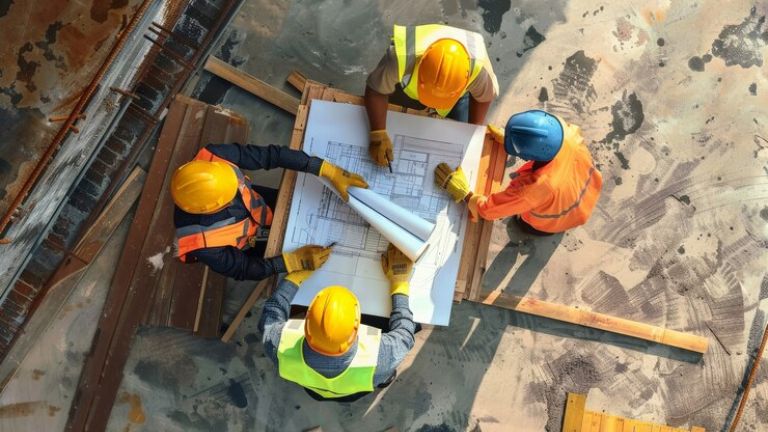Swooping in to revolutionize how we build; advanced building materials are kind of like the saviors of the construction industry. They are the subject’s game changers in terms of sustainability with style.
So, let’s dive into how these innovations are transforming the way we construct!
WHAT DRIVES ADVANCED CONSTRUCTION MATERIALS?
The prominent key driver is the quest for sustainability!
With concerns over climate change, the emphasis heightened on the search for innovative materials that lower the environmental impact throughout their lifecycle, offering a reduction in carbon footprints and promoting efficient consumption of natural resources.
SOME KEY FACTORS JUSTIFYING THEIR INCLUSION
Strength and Durability: Advanced materials offer superior strength and durability allowing for the construction of lightweight structures that can withstand extreme loads and environmental conditions.
Energy Efficiency: Advances in construction materials help improve energy efficiency over the building’s lifespan which accounts for better insulation, reduction in heating and cooling loads, and justifiable energy consumption.
Sustainability: Advanced building construction materials tend to lower the environmental impact by reducing carbon emissions, minimizing waste, and conserving natural resources.
Smart Materials: Advancements in nanotechnology have led to the development of smart materials that can detect structural damage & repair themselves while adapting to the prevailing environmental conditions. Smart building materials enhance the longevity and performance of buildings.
Modularity and Prefabrication: Prefabricated components made from advanced building materials streamline the construction process and reduce on-site waste allowing faster construction, improved quality control, and flexibility in design.
Aesthetics and Design Flexibility: Advanced construction materials allow architects and designers to expand the norms of their creative vision with customizable textures and finishes enhancing the possibilities for aesthetic expression.
Resilience to Natural Disasters: Advanced building materials are engineered to withstand earthquakes, hurricanes, floods, and other natural disasters. enhancing the resilience of structures and improving public safety, they mitigate damage and protect occupants during extreme events.
Cost Efficiency: Long-term benefits of the innovative materials in terms of reduced maintenance costs, energy savings, and improved occupant comfort, often outweigh the upfront higher price tag.
LISTING OF ADVANCED BUILDING CONSTRUCTION MATERIALS USED IN INDIA
To sustain the shelf life in terms of sustainability, the need is to weigh a blend of advanced building materials with the construction styles. To encourage and promote sustainable, energy-effective structures, in 1990 the Indian Government took action under the structure Accoutrements & Technology Promotion Council (BMTPC)
CLAY BRICKS
The Most Superior Building Material for a tropical climate like India, clay brick is known for its utility and high sustainability, subjecting it to be the healthiest and greenest of all the alternative solutions. Being the least devastating in terms of Sourcing it can even be recycled in the process.
FERROCEMENT WALL PANELS
Ferrocement wall panels are a type of slim wall Composed of a cement mortar layer reinforced with closely spaced wire mesh or meshed steel bars. It presents a modern solution to construction challenges, blending strength, durability, and versatility, offering exceptional structural integrity and resilience against cracking, deformation, and weathering. Despite their robustness, their flexibility in design suits various architectural styles and preferences.
Additionally, their thermal and sound insulation, fire resistivity, and cost-effectiveness make them an attractive choice for sustainable building construction and represent a promising advancement in modern construction practices.
FLY ASH BRICKS
Constructed with class C or class F fly ash and water, Fly Ash Bricks are derived from coal-fired power plants. A popular alternative to traditional bricks, these are often used in the construction of low-rise buildings. By incorporating fly ash, a byproduct of coal combustion, into their composition, Fly ash bricks offer a sustainable and reliable solution for modern construction needs. Fly Ash Bricks are a building material made using class C or class F fly ash and water. load-bearing structures to non-load-bearing partitions they are suitable for a wide range of applications with their uniformity, consistent quality, and high compressive strength. Also, their production process consumes less energy compared to traditional clay bricks, making them stand as a testament to the potential of utilizing industrial byproducts in construction, outliving their certain disadvantages, like Slow Strength Gain, Longer Setting Times, and Poor Air Content Control
GREEN ROOFING MATERIALS
Vegetated roofs and cool roof coatings are the advanced roofing products that are now used in India’s urban areas. mitigating the urban heat island effect, these materials improve air quality, reduce stormwater runoff, and enhance building energy efficiency.
AUTOCLAVED AERATED CONCRETE (AAC BLOCKS)
AAC blocks are manufactured using a mix of cement, lime, sand, and aerating agents. They are lightweight porous blocks having low density with high thermal insulation properties. With gaining popularity in India, AAC blocks are energy efficient, easy to install, and have reduced environmental impact as compared to traditional clay bricks.
UPCYCLED MATERIALS
Reclaimed wood, recycled plastic, industrial byproducts, and other recycled and upcycled materials offer environmental benefits by reducing waste generation and conserving natural resources They are now being incorporated into the designs for providing unique aesthetic and functional properties.
BAMBOO REINFORCED CONCRETE
As a fast-growing and renewable resource, Bamboo has been an efficient construction and building material known to man. Presently it is being explored as a reinforcement material in concrete structures, offering a sustainable alternative to steel reinforcement. Particularly in low-rise construction projects, Bamboo-reinforced concrete provides adequate tensile strength and can withstand seismic forces, making it suitable for earthquake-prone regions in India.
PREFABRICATED CONSTRUCTION MATERIALS
Prefabricated steel structures, modular panels, and 3D-printed components are gaining traction in India, as these materials enable faster construction. Prefabrication has improved quality control, and cost savings, making these materials ideal for the country’s growing infrastructure needs.
With the quest for futuristic advancements, we must feel responsible for the environmental impact that our human-made interventions leave behind. From fly ash bricks (the greener option) to Prefabricated Construction Materials (the high-tech wonder), these materials are paving the way for a sustainable future with energy-efficient and resilient structures.
It is in our hands to make innovation that shapes the physical landscape while making a positive impact on the surrounding environment.
Time to work for a brighter future…One advanced material at a time!
We deliver, what we promise ~Concept space




Add Comment